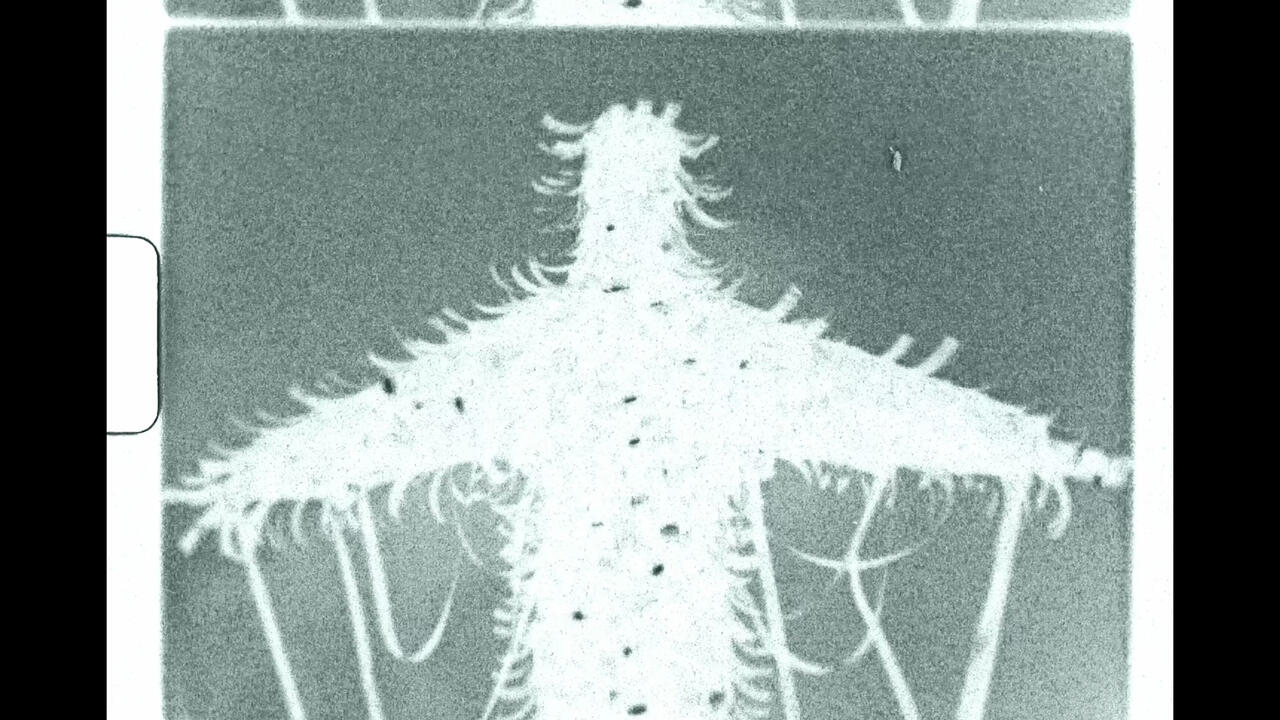Jonathan Borofsky
'Who Am I?' is the question, and also the name of this show which brings together seventeen works made by Jonathan Borofsky over the last 22 years. That many years ago, Borofsky had written all of the numbers up to, and including, two million. This year, from a self-portrait of the same name, we see that he's up to at least six million, seven thousand, one hundred and eight-five. Who is He? 'He is the one whose 'I' is known to others as having written six million, seven thousand, one hundred, and eighty five numbers, up until now'.
During an interview which appeared in Le Monde in 1980, Michel Foucault proposed a little game. He called it the 'Year Without A Name'. The game plan was as simple as it was sharp: 'For a year books would be published without their authors names.' Change 'books' to 'artworks' and imagine. Critics might become more honest in their perceptions outside the formal and informal allegiances which have reified and divided the many. Viewers from different art worlds might think for themselves outside of the vagaries of fashion. Artists might change gear with a greater ease outside the pressure to conform to an individual style. The prejudices underpinning restrictive typologies (formalist, conceptual, expressive, stupid...) and repressive tokenisms (gay, Asian, black, left-handed...) might be thrown into invisibility and, therefore, powerlessness; rendering the act of interpretation all the more difficult, yet imagine how much more rewarding.
Let's say that the game has begun. Paula Cooper has put together a group show titled 'Who Am I?'. At first sight, it's disorientating and all over the place, formally as well as conceptually. Among the works are: a sculptural installation comprising three silhouette-like figures mechanically mouthing the word 'chatter' to a mantra-like audio track while staring at a figure eight twirling endlessly round and round; several discrete sculptures a minimalist cube with a window in its side exposing a frying pan perpetually illuminated by a bright light, a leafless tree masterfully sculpted from welded steel rods, a realistically articulated flying fibreglass man suspended from the ceiling with a hole through his chest; drawings, such as a confidently rendered, two-headed hallucinogenic beast, another, carelessly drawn directly onto a wall, illustrating a mysterious story about a crippled art student; paintings a large-scale canvas, curiously still packed in bubblewrap and duct-tape, clumsily depicting a vase with flowers, a monochrome picture with large sans-serif type spelling out an incomplete sentence 'You are alone Slow Down There is No One to Please but Your'; a monitor with an animated sequence showing a dog walking back and forth on a tightrope; photographs a diptych which shows Adolph Hitler and another man (apparently the artist) of about the same age ... Confused?
Who is the curator? For a group show, the radical absence of uniformity or explicit relationships is startling. One can suggest that perhaps this might be the point: an exhibition of works which are expressions (in the way that a virus expresses itself) from someone's wet and sticky dream world, or from someone else's (arguably) language-less unconscious, or from someone else's psychosis. These works seem to float in a hazy, hallucinatory gunk, while nonetheless being adamant in their showing, telling and inclusion of very particular details. Each yearns for some sense of reconciliation with its maker, without resort, however, to the most faithful criterion for Modern art: stylistic consistency. Each work shows a strange confidence, even those which are awkward, or seemingly unfinished; yet this confidence betrays a definitive lack of purpose. To experience these works together is as frustrating as it is exhausting yet, somehow, one finds oneself masochistically trying to understand: Who are these people?
This game is no fun. Insecurity about one's identity, or in relation to other's identities is as disquieting as it is difficult. One needs some security sometimes. Maybe this is why Jonathan Borofsky counts.















